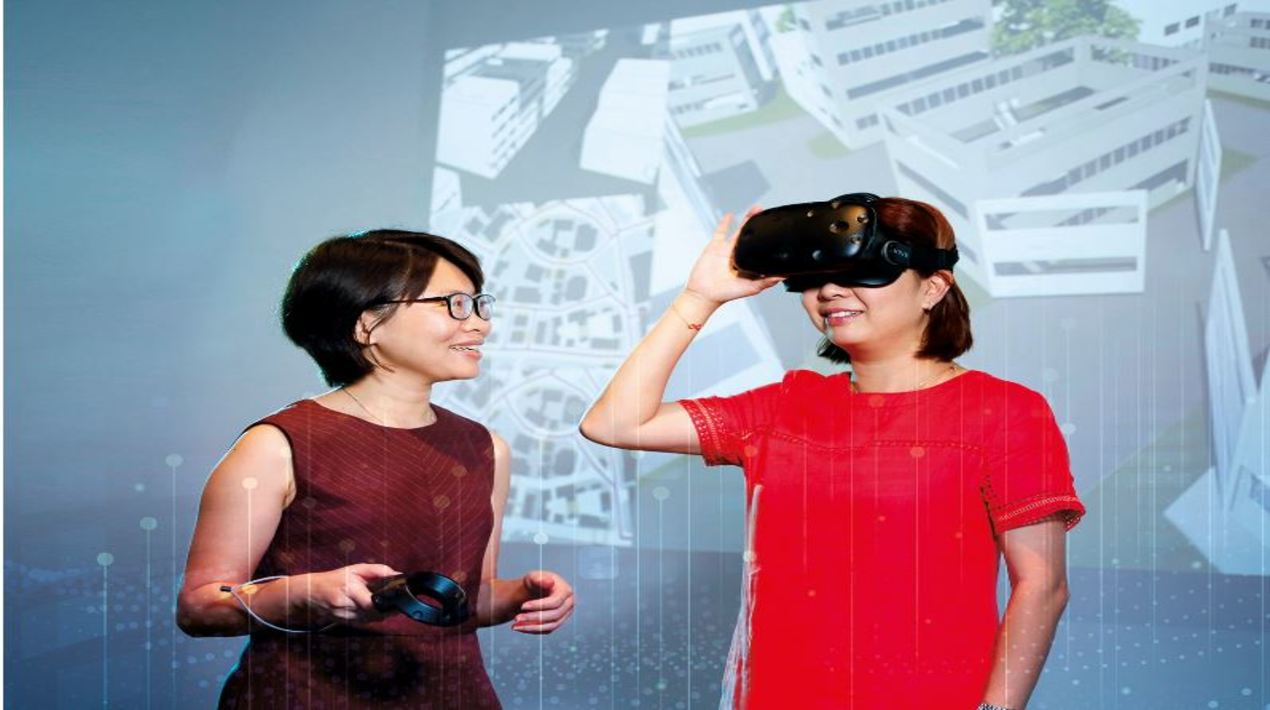
The Defence Science and Technology Agency (DSTA) harnesses science and technology to enhance the Singapore Armed Forces (SAF) capabilities. DSTA also contributes its multidisciplinary expertise in areas ranging from cybersecurity, systems engineering to procurement and protective technology, in support of national-level developments.
In the Simulation and Training Systems Hub (STSH), DSTA taps the latest technologies such as modelling and simulation, extended reality, data analytics and Artificial Intelligence (AI) to experiment and develop new training concepts and capabilities for the SAF.
For example, defence engineers from STSH tapped simulation technology to conceptualise the Littoral Mission Vessel Simulation Centre, a one-stop integrated environment for realistic training scenarios. With the simulation centre, the ship crew can train onshore without the need to sail and in a diverse range of challenging scenarios, complementing live training. Engineers and system architects explore new technologies and innovations, and in doing so develop strategies to realise training capabilities for the SAF.
Recently, One of DSTA’S projects is developing a command and control (C2) system to support the nation’s fight against COVID-19. Back in May 2020 at the peak of the pandemic, testing needs had to be ramped up quickly. Therefore, the Ministry of Health set up the Testing Operations Centre (TOC) to aggregate national testing demands and centrally manage the allocation of testing capacity.
Collaborating closely with other agencies, DSTA engineers developed a C2 system that enhanced the TOC’s capabilities in managing large-scale testing operations. The system provided an overview of testing demands and laboratory capacities, optimised demand-supply allocations and also reduced the turnaround time to receive test results. This project really showed how diverse and adaptable defence engineers are.
Since COVID-19 emerged, some overseas training was deferred and as a result, there has been increased adoption of simulation training to maintain our soldiers’ competencies and force readiness. At the workplace, we have also embraced workplace IT transformation in our stride, as work from home was established as the new norm and tele-conferencing tools became our primary mode of communicating with our colleagues and stakeholders at work.
– Eng Huiling, Director (Technology Development), Simulation & Training Systems Hub, DSTA
Harnessing science and technology, engineers and IT professionals leverage multidisciplinary expertise to equip soldiers with advanced systems to defend Singapore. DSTA also contributes its technological expertise to support national-level developments. To achieve its mission, DSTA excels in systems engineering, digitalised platforms, cyber, software development and more.
DSTA is committed to its mission of providing technological and engineering support to meet Singapore’s defence and national security needs. Therefore, DSTA has a low operational risk appetite related to business continuity, safety and delivery of capabilities to our partners, as well as incidents that affect our credibility to the public and the international community.
DSTA will employ sound enterprise risk management principles, transparent decision-making, and effective communication to prioritise risk in delivering capabilities to our partners. To develop new and potentially groundbreaking defence capabilities, DSTA is prepared to assume higher risks to push the envelope with the application of innovative ideas and technologies.
As reported by OpenGov Asia, DSTA implements defence technology plans, acquires defence equipment and supplies, and develops defence infrastructure for the Ministry of Defence. Deputy Prime Minister, Coordinating Minister for Economic Policies and Minister for Finance Heng Swee Keat made a speech at DSTA’s 20th Anniversary outlining the many achievements and contributions DSTA has made to keeping Singapore safe.
The Minister acknowledge how DSTA has been actively building a pipeline of future engineers and scientists, by nurturing an interest in STEM among students to realise these possibilities. The Young Defence Scientists’ Programme and BrainHack have given students the opportunity to view the possibilities, for example in unmanned and space technologies.
















